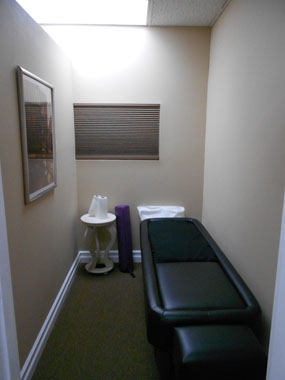|
Hydrotherapy
|
|

|
|
The
term hydrotherapy, by definition, refers to the use
of water in the treatment of disease or trauma. In a
broad sense, hydrotherapy includes water treatment
utilizing any of the three natural forms of water;
solid, liquid or vapor. The most common technique
for hydrotherapy involves the use of the small
whirlpool tanks. These tanks permit immersion within
the agitated water of one or more extremities or the
patient may sit in the tub. Larger therapy units
(e.g., a Hubbard tank), incorporating larger
whirlpools, can accommodate both a patient and a
therapist.
|
|

|
|
Dry
Hydrotherapy Tables
|
|

|
|
Hydrotherapy
tables are a technological advance over whirlpools
and immersion water therapy. The effects are very
similar but the patient remains dry. The patient
lies back, completely clothed, on the surface of the
table. Just under the surface is a mattress filled
with heated water. A pump propels the water toward
the patient through three patented hydro-jets. The
pressure of the water against the patient’s body
provides the massage. Each jet spins at more than
200 revolutions per minute. A primary wave and a
lighter secondary wave combine to produce an
effective massage to all areas of the spine
simultaneously. The therapy can be applied to nearly
every part of the body by simply changing the
patient’s position on the table. The combination
of flotation, heat and massage produce the
therapeutic effects and are described below.
|
|

|
|
Flotation: Water
is extremely buoyant. When the body is placed on the
water mattress, there is minimal strain on the
weight-bearing joints.
Additionally, few if any muscles are required to
hold the body up or in position. These two
conditions combine to help the patient’s body
relax resulting in an increased physiologic response
to treatment.
|
|

|
|
Heat: Heat
is evenly conducted through the skin and into the
muscles and soft tissues of the body. The heat
expands blood vessels, increases blood and lymphatic
circulation, increases metabolism and has a sedative
effect.
|
|

|
|
Massage: The
pressure of the water on the body increases venous
and lymphatic flow. One of the effects of the
resulting stimulation is increased molecular motion
in the skin that may aid the healing process.
Hydromassage helps works out trigger points in the
muscles, which are localized areas of
hyperirritability that induce a cycle of spasm,
pain, tension, weakness and limited range of motion
in the joints.
|
|

|
|
Hydromassage
focuses on the muscular system, the fascia, the
circulatory and lymphatic systems or a combination
of these body systems. Fascia is the connective
tissue that attaches organs to organs, muscles to
bones (tendons) and bones to bones (ligaments). The
lymphatic system carries lymph, a clear or yellowish
substance that flows throughout the body, filtering
foreign matter and removing excess fluid, protein
and waste products from the tissues and transporting
them to the blood to be circulated and eliminated.
|
|

|
|
Effects
of Warm Dry Hydrotherapy
|
|

|
|
The
major physiologic effects of hydrotherapy can be
summarized as follows:
|
|

|
|
•
Increases circulation and metabolic rates
• Increases mobility
• Relaxes and relieves fatigue
• Analgesia
• Sedation
• Promotes tissue healing and repair
• Relieves muscle spasms and pain
• Helps remove metabolic toxins
• Relaxes capillaries and other soft tissues
• Increases blood volume and oxygen consumption
• Relieves pain of myositis and neuritis
• Soothes irritated cutaneous nerves
• Lessens general nervousness
• Dilates blood vessels
• Soothes nerves of the visceral organs
|
 |